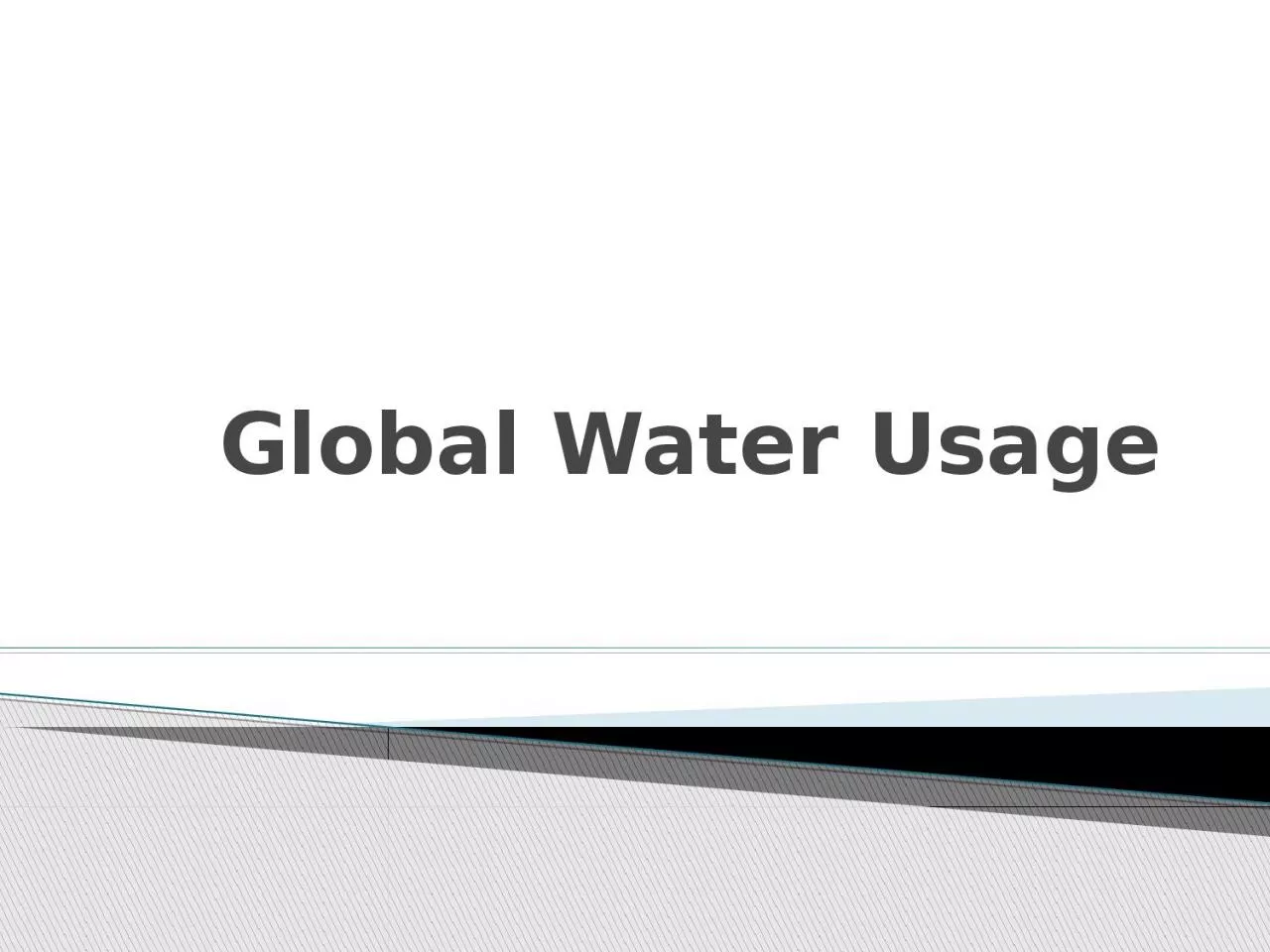

975 of all water on Earth is salt water leaving only 25 as fresh water Nearly 70 of that fresh water is frozen in the icecaps of Antarctica and Greenland most of the remainder is present as soil moisture or lies in deep underground aquifers as groundwater not accessible to human use ID: 1045148
Download Presentation The PPT/PDF document "Global Water Usage Over 70% of our Earth..." is the property of its rightful owner. Permission is granted to download and print the materials on this web site for personal, non-commercial use only, and to display it on your personal computer provided you do not modify the materials and that you retain all copyright notices contained in the materials. By downloading content from our website, you accept the terms of this agreement.
1. Global Water Usage
2. Over 70% of our Earth's surface is covered by water ( we should really call our planet "Ocean" instead of "Earth"). Although water is seemingly abundant, the real issue is the amount of fresh water available. 97.5% of all water on Earth is salt water, leaving only 2.5% as fresh water Nearly 70% of that fresh water is frozen in the icecaps of Antarctica and Greenland; most of the remainder is present as soil moisture, or lies in deep underground aquifers as groundwater not accessible to human use. < 1% of the world's fresh water (~0.007% of all water on earth) is accessible for direct human uses. This is the water found in lakes, rivers, reservoirs and those underground sources that are shallow enough to be tapped at an affordable cost. Only this amount is regularly renewed by rain and snowfall, and is therefore available on a sustainable basis.The Water Resources of Earth
3. 12,000 yrs. ago: hunter-gatherers continually return to fertile river valleys 7,000 yrs. ago: water shortages spur humans to invent irrigation 1,100 yrs ago: collapse of Mayan civilization due to drought Mid 1800's: fecal contamination of surface water causes severe health problems (typhoid, cholera) in some major North American cities, notably Chicago1858: "Year of the Great Stink" in London, due to sewage and wastes in Thames Late 1800s-early 1900: Dams became popular as a water management tool 1900s: The green revolution strengthens human dependency on irrigation for agriculture World War II: water quality impacted by industrial and agricultural chemicals 1972: Clean Water Act passed; humans recognize need to protect waterA timeline of human water use:
4.
5. The population is growing rapidly, putting more pressure on our water supply (demand is increasing)The amount of water is effectively reduced by pollution and contamination (supply is decreasing)More than one out of six people lack access to safe drinking water, namely 1.1 billion peopleMore than two out of six lack adequate sanitation, namely 2.6 billion peopleWhat's the problem?:
6. Basic human needs for water should be fully acknowledged as a top international priority.Water-related diseases, including Guinea worm, diarrhea, onchocerciasis, malaria and typhoid should be brought under control.Agricultural water should be efficiently used and allocated.Basic ecosystem water needs should be identified and met.Serious water-related conflicts should be resolved through formal negotiations.What are the Solutions?
7. Unicef VideoGlobal Water Crisis